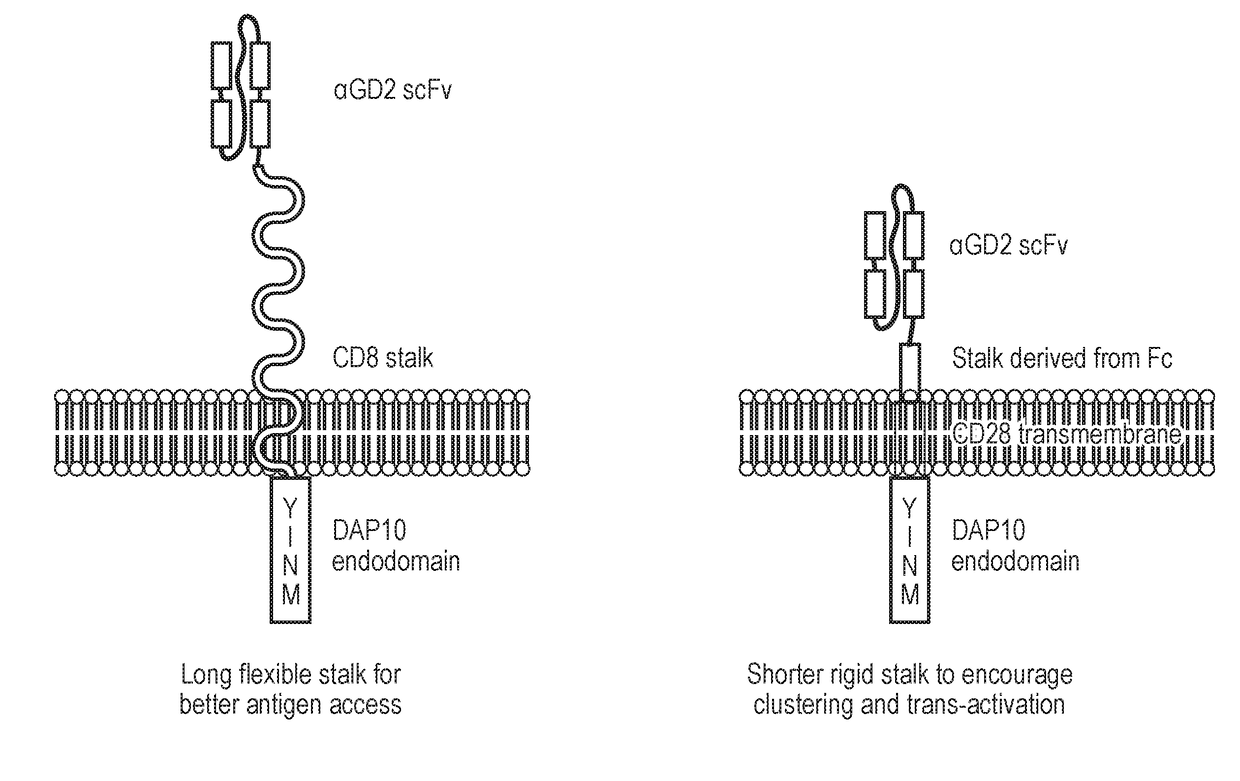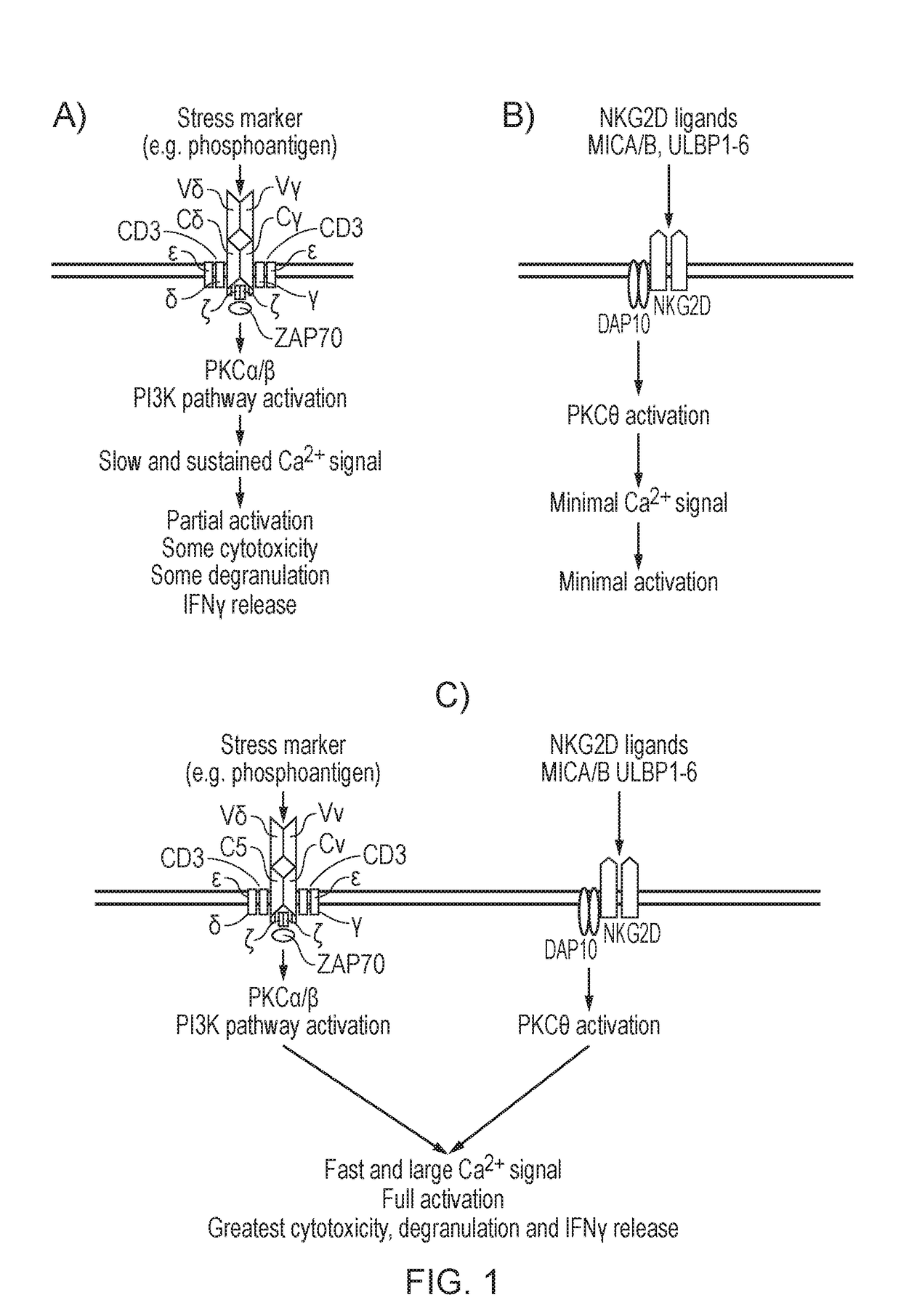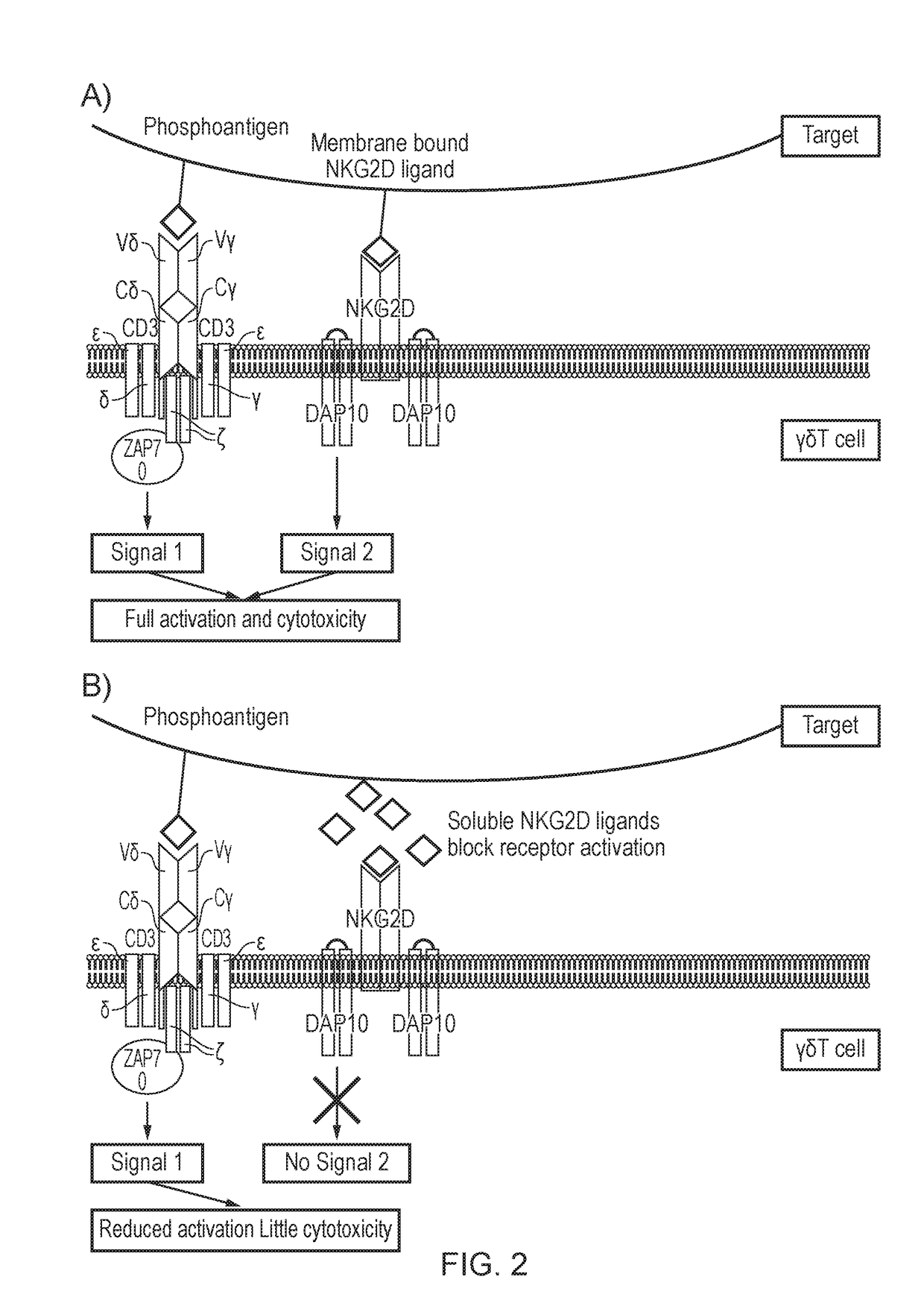T cell which expresses a gamma-delta t cell receptor (TCR) and a chimeric antigen receptor (CAR)
a technology of chimeric antigen receptor and t cell, which is applied in the direction of specific cell targeting, fusion of specific cells, antibacterial agents, etc., can solve the problems of deeper problem and potential ‘on target-off tumour toxicity’, and achieve the effect of reducing unwanted ‘on target-off tumour’ effects
- Summary
- Abstract
- Description
- Claims
- Application Information
AI Technical Summary
Benefits of technology
Problems solved by technology
Method used
Image
Examples
example 1
n of γδ T Cells Expressing a Co-Stimulatory CAR
[0187]PBMCs were extracted from the blood of healthy donors using Ficoll density gradient separation. They were cultured in RPMI 1640 medium supplemented with 10% FCS, 1% penicillin / streptomycin, 100u / ml human IL-2 and 5 μM zoledronic acid for 5 days.
[0188]After 5 days they were transduced with retrovirus containing the CAR construct fused to RQR8, which acts as a marker gene and also provides a Rituximab (αCD20) sensitive suicide gene.
[0189]The illustrative CAR described herein includes aGD2-specific scFv, a linker based on the Fc portion of IgG1, a transmembrane domain derived from CD28 and the endodomain of DAP10 (see FIG. 10).
[0190]A second illustrative CAR includes a CD33-specific scFv, a linker based on the Fc portion of IgG1, a transmembrane domain derived from CD28 and the endodomain of DAP10 (see FIG. 11).
[0191]Co-expression of an anti-GD2-Fc-DAP10 CAR with the endogenous TCR of a γδ T cell was demonstrated (FIG. 4).
example 2
f GD2+ Cell Lines LAN1 and TC71 by Vδ2 γδT Cells Transduced with the aGD2-Fc-DAP10 CAR
[0192]Both the LAN1 and TC71 cells lines are known to express GD2.
[0193]Significant killing of GD2+ neuroblastoma cell line LAN1 was only seen when CAR transduced cells were used and not when non-transduced (NT) Vδ2 cells were used as effectors (FIG. 5A).
[0194]There was an additive effect against the GD2+ Ewing sarcoma cell line TC71 when the aGD2-Fc-DAP10 CAR was used in combination with 24h zoledronic acid treatment (FIG. 5B).
[0195]Addition of the CAR to αβT cells, which lack the signal 1 provided by the γδTCR in response to cellular stress, had no effect on cytotoxicity, unlike the effect of the CAR in Vδ2+γδT cells (FIG. 5C). This indicates that the CAR signal alone is insufficient for T-cell activation.
[0196]Expression of the aGD2-Fc-DAP10 CAR in γδ T cells did not result in GD2-specific killing of GD2 negative SK-N-SH cells (FIG. 6).
example 3
ion of CAR Expression Following Prolonged Co-Culture and GD2 Specific Expansion
[0197]Co-culture was started 24 days after transduction and serial analyses of cells for the presence of CAR and TCRVδ2 were taken in the presence of irradiated GD2+(LAN1) and GD2− (SK-N-SH) neuroblastoma cells (FIG. 7A).
[0198]The expansion of aGD2-Fc-DAP10 transduced Vδ2+ cells was only seen in the presence of irradiated GD2+ target cells (FIG. 7B).
PUM
| Property | Measurement | Unit |
|---|---|---|
| Nucleic acid sequence | aaaaa | aaaaa |
Abstract
Description
Claims
Application Information
 Login to View More
Login to View More - R&D
- Intellectual Property
- Life Sciences
- Materials
- Tech Scout
- Unparalleled Data Quality
- Higher Quality Content
- 60% Fewer Hallucinations
Browse by: Latest US Patents, China's latest patents, Technical Efficacy Thesaurus, Application Domain, Technology Topic, Popular Technical Reports.
© 2025 PatSnap. All rights reserved.Legal|Privacy policy|Modern Slavery Act Transparency Statement|Sitemap|About US| Contact US: help@patsnap.com



